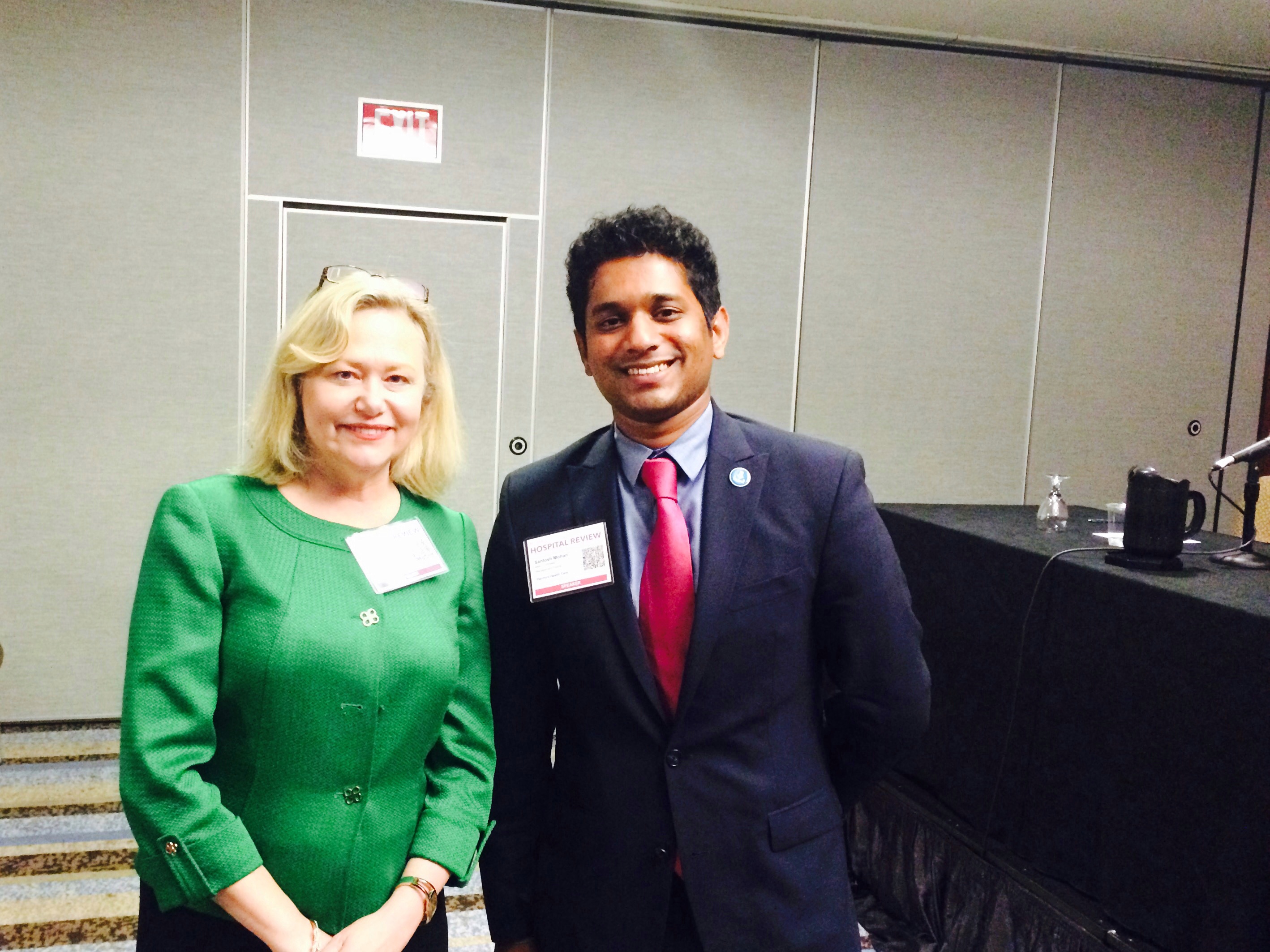 Hospitals and healthcare organizations have an intergenerational workforce. How can leaders minimize and manage related conflicts?
Hospitals and healthcare organizations have an intergenerational workforce. How can leaders minimize and manage related conflicts?
It all comes down to understanding.
At the Becker's Hospital Review 7th Annual Conference, Santosh Mohan, management fellow at Stanford Health Care, and Jean Ann Larson, leadership development officer at the University of Alabama at Birmingham Health System and School of Medicine presented on "Navigating the Changing Dynamics of the Intergenerational Workforce: Staffing Strategies for the Highly Productive Healthcare Operation."
Three big drivers shaping the workforce in the United States today are:
1. The changing demographics of the United States on the brink of generational change.
2. Change of guard issues as talent shifts due to demographic changes.
3. The shortage of skilled labor entering the market.
There are four different generations in the workplace: Traditionalists, Baby Boomers, Generation X and Millennials. "There is a popular perception that the majority of the workforce comes from the Millennial Generation. As of today that is not true; the workforce today is pretty evenly split between Millennials, Boomers and Generation X," said Mr. Mohan. "In five years, this is expected to change. By 2020, about half of the workforce is expected to come from the Millennial Generation."
Last year, for the first time, Millennials surpassed the Baby Boomers as the largest living generation in the United States and across the world. Millennials are still integrating into the workforce, while attrition from the Baby Boomers is a big problem for employers across the country.
There is a talent drain among many organizations with experienced managers nearing retirement. Each boomer takes with him or her about 40 years of industry-specific experience. On the incoming end of the pipeline, millennials are entering the workforce with less experience as an employee than other generations.
"Healthcare organizations are struggling to attract young employees with the right skill set for the organization and they are struggling to hold on to them for the long term," said Mr. Mohan. "Meanwhile, you have the Gen X in the middle struggling to assume the responsibilities passed on to them by the boomers."
There are few other industries that require industry-specific experience even from the younger members of the workforce. People come in very bright, but they lack the practical experience. Many boomers continue to work well into their retirement years, a trend that is likely to persist.
"The natural progression of younger workers replacing older workers is being disrupted. Generation X is hitting against the gray ceiling," said Mr. Mohan. Generation X employees are waiting for the big roles held by Boomers and their promotions are delayed; now bright young Millennials are coming up to challenge the Gen Xers for these roles. "The risk of losing these professionals is huge."
The healthcare industry is also struggling with staffing shortages. The projected number of new jobs in the healthcare industry 3.8 million for the next decade according to the Bureau of Labor Statistics; 19.8 percent is the projected increase in employment. Many organizations struggle with employee turnover and scaling back the workforce due to lack of talent.
Ms. Larson discussed the conflict between generations arising in the workplace, which includes:
• Work style issues
• Communication
• View of authority
• Employee engagement
The traditionalists and boomers also have different ideas about work ethic, rewarding accomplishments and the workday. The boomers often feel like younger leaders aren't working as hard and should be able to rise up the ladder without help — after all, the Boomers did. But that's not the right attitude, said Ms. Larson.
"We've got to stop eating our young," she said. "We truly have to help people so we can create those leaders."
Everyone wants to feel special, regardless of which generation they're in. Managers sometimes get caught up on what each generation needs. However, there are five preference items spanning all generations. They all want:
1. Challenging projects
2. Appropriate pay
3. To learn in advance
4. Fair treatment
5. Good work-life balance
The best organizations don't do all five; they do a few exceptionally well. "Create an accommodating culture and know about motivations," said Ms. Larson. You can integrate the generations by engaging them to understand what they need for success. "Motivate the individuals. How do you do this? One of the most interesting things a mentor told me, if you want to figure out how to help employees, colleagues and peers to be more successful, ask them instead of putting them in a box."
Ms. Larson sits down with direct reports and tells them she is here to help them be successful. "What do I need to start doing, continue doing and stop doing? The thing that's interesting is you have to shut up and listen," she said. It takes courage for the direct reports to respond, but can build a better working environment.


